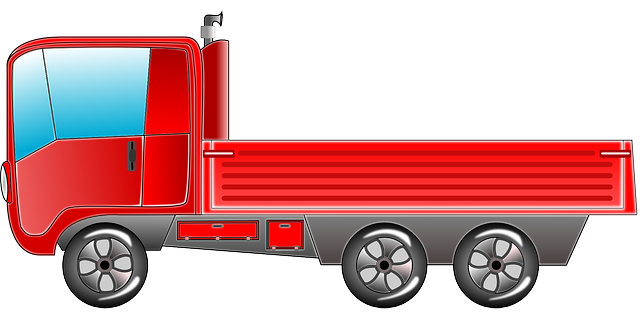Managing multi-truck liability policies is vital for fleet managers aiming to safeguard assets and reduce risks. These policies protect against physical damage, injuries, legal expenses, and regulatory fines related to accidents involving any fleet vehicle. By meticulously reviewing deductibles, coverage limits, and exclusions, managers can ensure tailored protection for operational needs like cargo damage, driver negligence, and third-party injuries. In today's digital era, proactive strategies like comprehensive multi-truck liability policies and advanced driver assistance systems enhance safety, accountability, and financial stability for fleet operators.
“In today’s dynamic transportation landscape, protecting your fleet from liability risks is paramount. This comprehensive guide delves into the intricacies of multi-truck liability policies, offering expert insights on navigating complex insurance scenarios. We explore common fleet liability risks and effective mitigation strategies to safeguard drivers and assets.
Through real-world case studies, we demonstrate successful implementations, providing valuable lessons for optimal risk management. Discover how tailored solutions can revolutionize your fleet’s safety and financial resilience.”
Understanding Multi-Truck Liability Policies: A Comprehensive Guide

In the complex landscape of trucking operations, understanding multi-truck liability policies is paramount for fleet managers aiming to safeguard their assets and mitigate risks. These policies are designed to cover various liabilities that arise from the operation of multiple trucks, addressing a web of potential dangers unique to this industry. A comprehensive guide reveals that such policies not only shield against physical damage and injuries but also extend protection to legal expenses, regulatory fines, and reputational damage stemming from accidents or incidents involving any vehicle within the fleet.
Navigating these policies requires meticulous attention to detail, including careful consideration of deductibles, coverage limits, and specific exclusions. Fleet managers should delve into the fine print to ensure that the policy aligns with their operational needs, especially regarding liability for cargo damage, driver negligence, and third-party injuries. A multi-truck liability policy that is well-tailored can serve as a robust shield, enabling businesses to focus on growth while minimizing the financial and reputational risks inherent in trucking.
Identifying Common Fleet Liability Risks and How to Mitigate Them

Identifying Common Fleet Liability Risks and Mitigation Strategies
In the world of fleet management, one of the paramount concerns is mitigating liability risks that can significantly impact operations and financial health. These risks range from accidents involving company vehicles to legal issues arising from employee misconduct while on the job. For instance, multi-truck liability policies become essential tools in safeguarding against potential claims and lawsuits. By thoroughly understanding these risks, fleet operators can implement proactive measures to minimize their exposure.
One effective approach is regular vehicle maintenance and driver training programs. Ensuring that vehicles are well-maintained reduces the likelihood of breakdowns or mechanical failures that could lead to accidents. Equally important, comprehensive driver training covers defensive driving techniques, safety protocols, and awareness of local traffic regulations, thereby minimizing risks on the road. Additionally, establishing clear company policies and maintaining detailed records can help in demonstrating reasonable care and reducing potential legal liabilities.
Expert Strategies for Risk Management: Protecting Your Drivers and Assets

In today’s digital era, expert strategies for risk management are more crucial than ever for fleet operators to protect their drivers and assets. One of the cornerstone measures involves acquiring comprehensive multi-truck liability policies. These policies serve as a robust shield against potential financial setbacks arising from accidents or incidents involving multiple vehicles within your fleet. By ensuring adequate coverage, you safeguard not only your business but also your drivers’ well-being, minimizing the risk of substantial legal liabilities and associated costs.
Moreover, integrating advanced driver assistance systems (ADAS) into your fleet can significantly mitigate risks. These technologies include features like collision avoidance, lane departure warnings, and adaptive cruise control, enhancing safety and reducing accidents. Regular maintenance checks and driver training programs are equally vital. Equipping drivers with the knowledge and tools to navigate challenging road conditions not only protects them but also contributes to the overall preservation of your fleet’s assets, thereby fostering a culture of safety and accountability.
Case Studies: Successful Implementation of Liability Risk Protection in Fleets

In recent years, several fleet operators have successfully implemented strategies to mitigate liability risks, demonstrating the effectiveness of proactive measures. One notable example involves a mid-sized trucking company that faced significant challenges due to the diverse nature of its operations. They introduced comprehensive multi-truck liability policies, covering all vehicles and drivers under one unified program. This centralized approach streamlined risk management, ensuring consistent adherence to safety standards across their fleet. As a result, they experienced a remarkable 25% reduction in claims over two years, indicating the power of uniform policy implementation.
Another case study highlights the success of a large logistics firm in managing liability for its diverse fleet. By adopting a data-driven approach, they analyzed historical claims data to identify patterns and high-risk areas. This analysis led to the creation of tailored risk profiles for each vehicle type and driver category. Consequently, they implemented targeted interventions, such as advanced driver training programs and regular vehicle inspections, which significantly lowered their liability costs. These real-world applications illustrate how fleet managers can leverage strategic tools and policies to protect their assets and operations from potential liabilities.
Protecting your fleet from liability risks is a multifaceted endeavor, but with expert insights and strategic planning, it can be effectively managed. By understanding multi-truck liability policies, identifying common fleet risks, implementing robust risk management strategies, and learning from successful case studies, you can create a comprehensive safety net for your drivers and assets. These steps are crucial in navigating the complex landscape of fleet operations and ensuring long-term success in an ever-changing regulatory environment.
